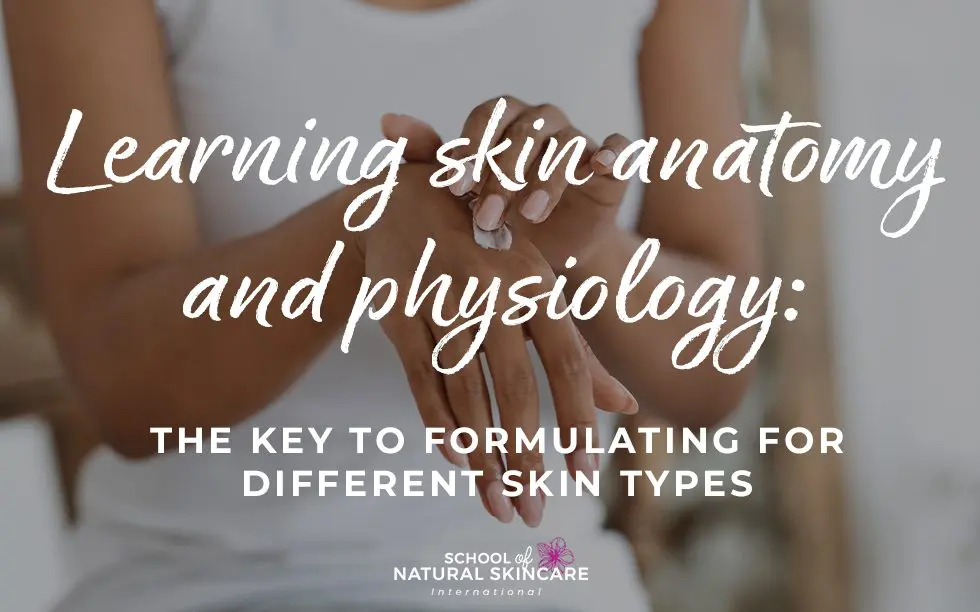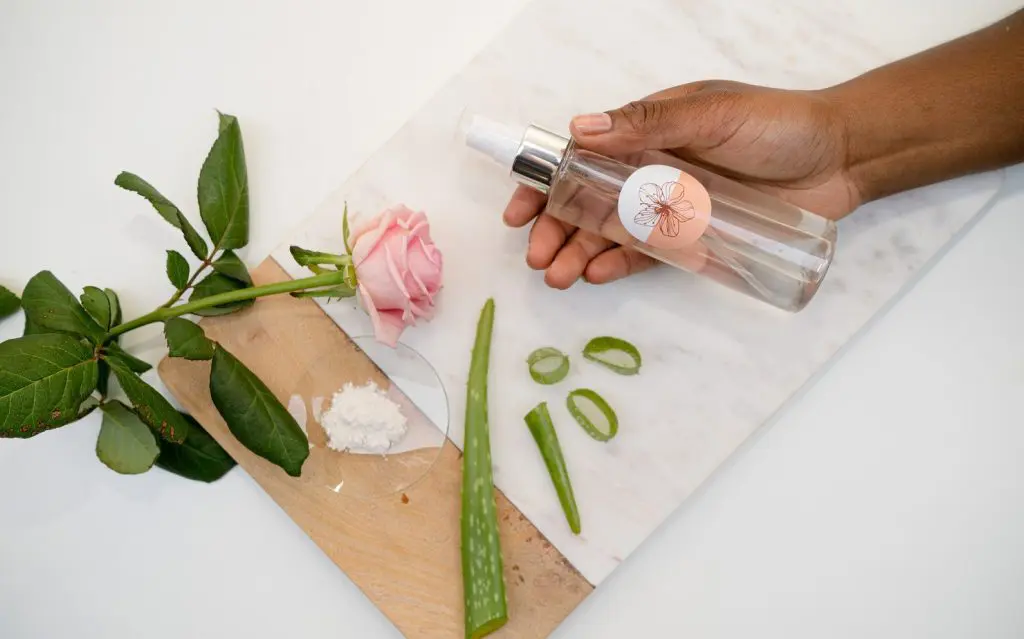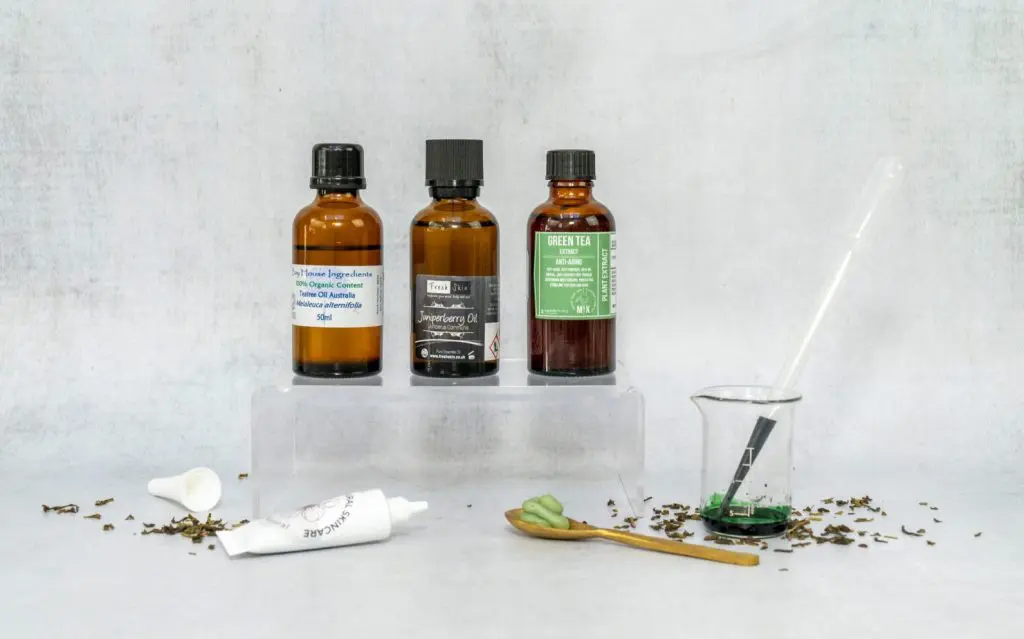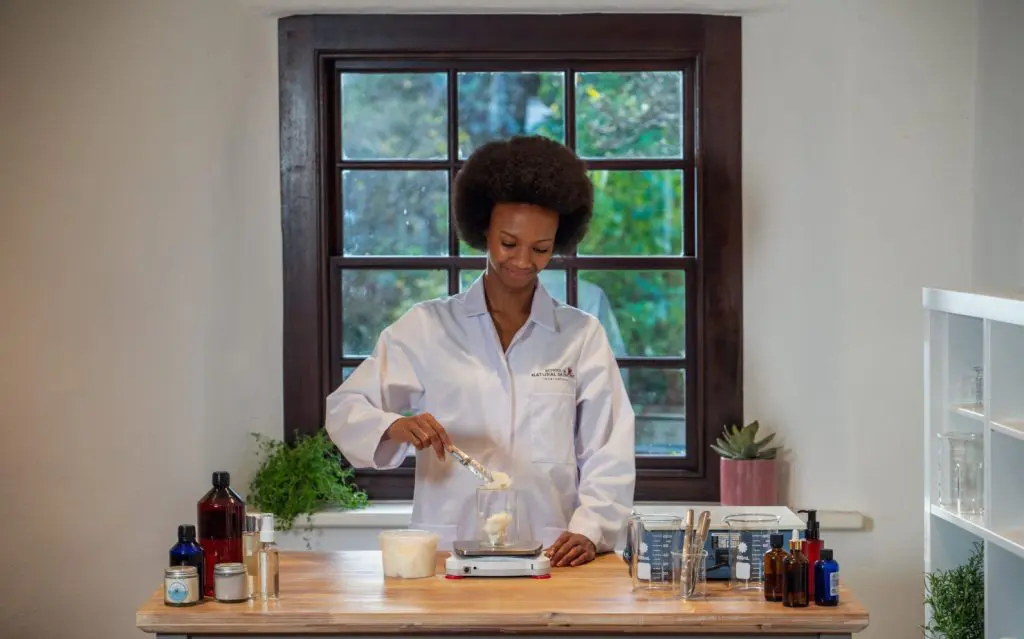One of the most important areas of knowledge for a formulator of natural and organic skincare is skin anatomy and physiology.
It is not enough to simply create a skincare product with a hunch that it will work on certain skin types and skin concerns.
Textbooks on this subject are not designed to be fun and exciting, scientific papers are hard to understand for non-scientists and videos are not easy to find. So it is little wonder that this is one topic that students put off learning about.
How good is your skin anatomy and physiology?
If you intend to design and create your own natural skincare products, either for yourself or to sell, you have to develop a good understanding of the skin.
Even with excellent knowledge of ingredients, the best equipment, and top notch suppliers, if you don’t have a good understanding of the skin, you’re essentially formulating with one hand tied behind your back.
You need to be able to deliberately select ingredients for specific skin types or particular skin concerns. And you need the knowledge to enable you to do that.
That’s exactly why we’ve dedicated an entire module to this very topic inside our Diploma in Natural Skincare Formulation – Module 4 Skin Anatomy and Physiology: Formulation for Different Skin Types.
This is an informative module that gives you the essential knowledge needed in order to formulate like a pro. It is written in a clear and informative way that isn’t confusing or as hard to read as many textbooks on this subject.
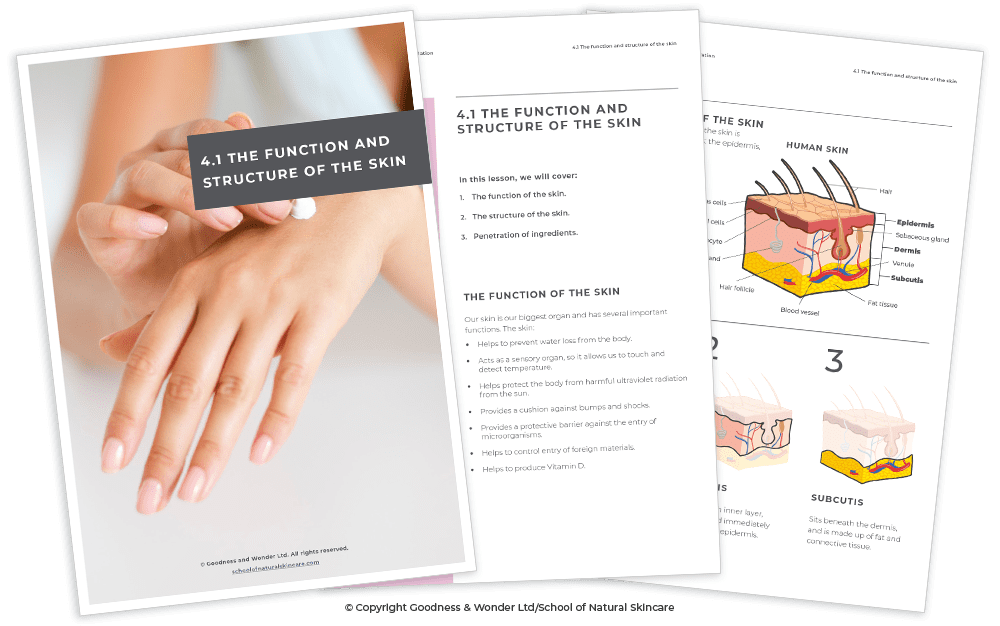
In addition to that, we’re committed to being inclusive to people from all cultural origins which means ensuring our courses cater to all skin tones.
For that reason we asked Dija Ayodele, a leading esthetician and founder of Black Skin Directory to provide specialist training to our team to help us ensure that skin of color is represented in our course materials.
Formulating for Different Skin Types; what’s included?
The Diploma in Natural Skincare Formulation’s Module 4 – Skin Anatomy and Physiology: Formulating for Different Skin Types is where you’ll gain knowledge of:
- How the skin functions.
- The physiological changes that occur as the skin ages.
- Common characteristics of different skin types, tones and concerns.
- Considerations when formulating products suited for oily, sensitive, dry, combination and aging skin.
- How to address concerns such as hyperpigmentation.
What is more, you can download this module, save it to your own files and refer to it as often as you like for years to come.
Below is a breakdown of what’s included in this module, but you can also see the same information on the course page on our website, or in the prospectus.

A breakdown of skin anatomy and physiology
What’s included with Module 4 – Skin Anatomy and Physiology: Formulating for Different Skin Types
As we said above, this is where you’ll:
- Apply knowledge of how the skin functions
- Discover the physiological changes that occur as the skin ages
- Understand the common characteristics of different skin types, tones and concerns
So you can formulate products suited for oily, sensitive, dry, combination and aging skin and to address concerns such as hyperpigmentation.
4.1 The function and structure of the skin
Learn the seven main functions of the skin, then we take you layer-by-layer through the epidermis, dermis and subcutaneous layer learning about the main responsibilities of each. We explore the epidermis in detail, following the production of skin cells from creation to shedding away.
4.2 Skin barrier
A disrupted skin barrier can cause dry patches and flakiness, plus the skin can feel sensitive or inflamed. Discover the significance of the skin barrier and how to keep it in optimum condition.
4.3 Moisturizing the skin: water, humectants, emollients and occlusives
Learn how to effectively moisturize the skin, and the benefits and limitations of anhydrous products and emulsions.
4.4 The acid mantle
An important role of the acid mantle is to maintain the skin’s pH balance, which helps maintain skin suppleness, smoothness and strength. Discover factors affecting the acid mantle pH, possible characteristics of disrupted acid mantle pH and how to protect and restore the acid mantle.
4.5 Skin aging
Understand in detail how the skin ages, the physiological changes, visible signs of skin aging and how skincare products can improve the appearance of aging skin.
4.6 Formulating for different skin types and concerns
We take a close look at different skin types (including mature, oily/acne prone, dry, sensitive and normal), the characteristics of these skin types and which ingredients are beneficial. We provide you with a guide for each skin type, which will be invaluable when you start formulating!
We also explore the role of cosmetics and drugs in the treatment of skin conditions including acne, eczema/dermatitis, hyperpigmentation, psoriasis and rosacea.
4.7 Formulating for the eye contour and lips
We share the factors to consider when formulating for the eye contour, how the skin on our lips is different to the skin on our face and what lips need to stay in optimum condition.
4.8 A skincare routine
A skincare routine doesn’t need to be complicated but it is the key to radiant skin! Follow our simple facial and body care routines and learn about occasional skincare treatments.
Taking the next step
If you’d like to find out more about the skin, you’ll want to read our article, Understanding How Skin Works.
Our free resources are always generous and informative but they will only get you so far. The fast track to learning about skin anatomy & physiology and how to apply that to formulating your own natural skincare products like a professional, is to enroll onto our accredited, online Diploma in Natural Skincare Formulation.
You can find out more about the course here (where you can also register for a free trial), and download a copy of the prospectus here. If you have any questions or want to find out more, please contact our customer service team by email using [email protected].
Free Guide
The Beginner's Guide to Formulating Natural Skincare Products (From scratch, like a professional!)
Start creating your own natural skincare products from scratch – rather than simply following recipes!
Learn how to formulate like a pro and discover our top tips for becoming a confident skincare formulator.
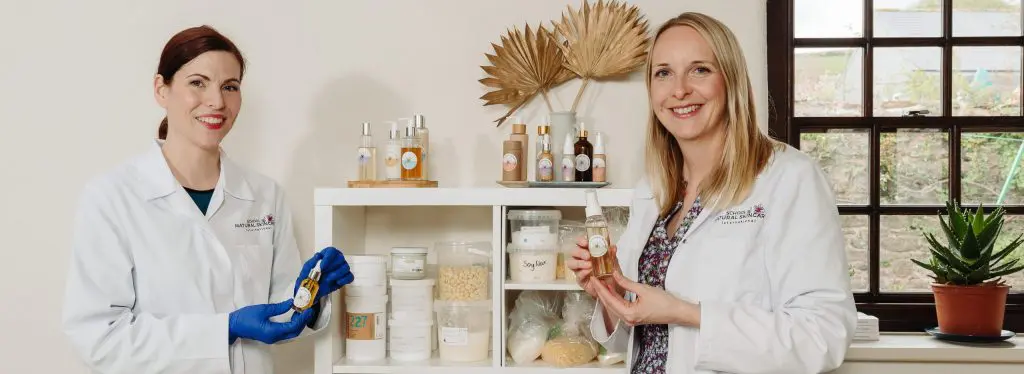
Exclusive for our newsletter subscribers. Sign up now.
We look after your data in accordance with our privacy policy.
Download this fabulous guide and you’ll learn:
- What formulating is and why you need to be doing it!
- The difference between following recipes and formulating your own products.
- Our step-by-step process to designing products people love.
- Four easy ways to personalize your skincare products.
- Choosing the right carrier oils for your beauty products.
- Plus, you’ll get our Safe Product Checklist: How to make sure the skincare products you make are safe and stable
